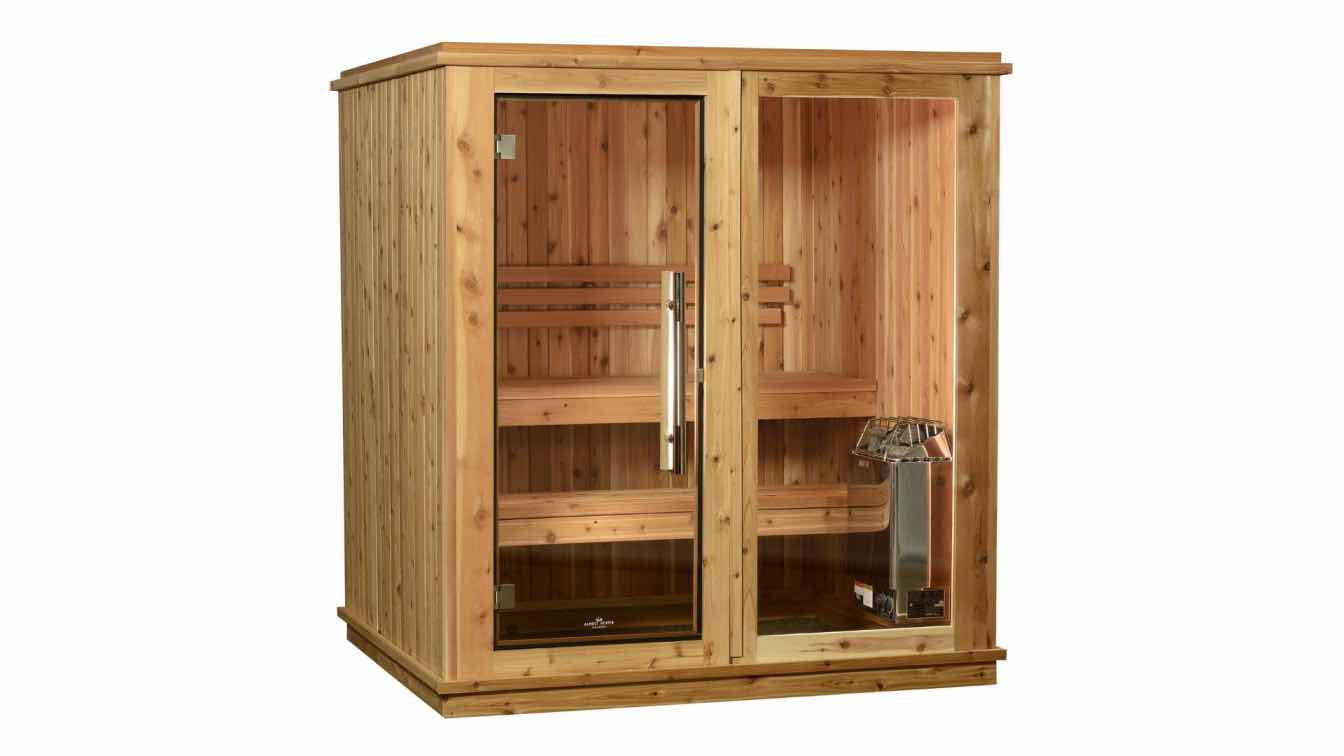The design ethos of residential architecture is undergoing a noticeable transformation, particularly with regards to the creation of personal wellness retreats within homes. There’s a compelling trend within this interior design shift, as increasingly more American homeowners embrace the idea of installing infrared saunas.
Statistically speaking, infrared saunas have gained incredible popularity, accounting for more than 44% of all online information searches relating to saunas in 2023. Market research also indicates that infrared saunas now account for the largest share of home installations.
As architects and homeowners, observing such data makes it worthwhile exploring the key reasons why infrared saunas have become so popular and mainstream, reshaping our perspectives towards incorporating wellness features into home design and planning.
How Do Infrared Saunas Work?
Traditionally, saunas have been associated with luxury spas or gym facilities, but with advancements in technology and design, infrared saunas have become increasingly accessible for residential use.
Unlike conventional saunas, which usually rely on heated rocks or steam to generate warmth, infrared saunas use infrared light panels to emit radiant heat that directly penetrates the body. Essentially, they heat up your body more efficiently, instead of heating the air within a sauna space.
Affordable and Practical Wellness Solutions
Undoubtedly one of the most compelling aspects for home design, safe and affordable indoor infrared saunas are far more cost-effective, especially when compared to traditional sauna setups.
Installing a traditional sauna may require costly home renovation work and ongoing maintenance, whether indoors or outdoors, but infrared saunas offer low-cost alternatives that fit easily within the budgets of most American homeowners.
Convenient indoor applications also eliminate the need to plan for outdoor sauna locations, making infrared saunas accessible to homeowners with limited outdoor space. After all, not everyone has a large garden or backyard available for sauna placement, especially if they live in an apartment or condo.
Infrared sauna units can be installed practically anywhere within the home, even in small rooms like a bathroom or utility. Creative architects and interior designers can also utilize other placement ideas, such as beneath stairs or inside dressing areas.
Relieving Stress and Health Benefits
Given that stress relief has become a prevalent concern for many American, they often seek ways to unwind and rejuvenate. Indeed, wellness features have become a key consideration for homeowners across the United States, whether delving into the real-estate market or simply looking to spruce up their existing home.
Indoor infrared saunas provide an oasis of relaxation within the comfort of one's own home, offering a sanctuary to escape the pressures of daily life. Beyond stress relief, regular use of infrared saunas has been shown to improve cardiovascular health, promote detoxification, and enhance overall well-being. But is there any real proof?
Well, according to reports published by the Mayo Clinic: “Many studies have looked at using infrared saunas in the treatment of long lasting health problems and found some proof that saunas may help.”
Based on a variety of genuine health studies, researchers and medical professionals found that infrared saunas are beneficial for numerous conditions. These include high blood pressure, heart failure, dementia and Alzheimer's disease, headache, type 2 diabetes, and arthritis.
Low EMF Levels and High Efficiency
In the past electromagnetic fields (EMF) exposure raised some concerns, leading many American homeowners to seek information about low EMF emissions. Fortunately, modern infrared sauna models are designed with safety in mind, utilizing advanced technology to minimize EMF levels while maximizing therapeutic benefits.
Additionally, many infrared sauna kits are super easy to assemble, requiring nothing more than a standard electric outlet and minimal installation effort. This makes them a practical choice for homeowners looking to enhance their homes with a wellness feature that seamlessly integrates into any space.
There’s also further cost benefits worth considering. Running an infrared sauna tends to be more energy efficient than traditional saunas, consuming half the electricity on average. Some comparisons have suggested that over the course of 30-60 minute sessions, using your infrared sauna will consume roughly the same energy as a dishwasher or similar home appliance.
Installing your own 1-2 person infrared sauna can also save on expensive treatments at health and wellness studios. Indeed, the cost of a home installation can actually work out less than you might otherwise spend over a year or two, based on average studio pricing at $1 per minute for infrared sauna sessions in most US locations.
Our Warming Architectural Conclusion
The integration of indoor infrared saunas into American home spa design represents a significant architectural trend that prioritizes affordability, functionality, and wellness. As architects, it's essential to stay abreast of these evolving trends and explore innovative ways to incorporate wellness features into our designs.
By embracing the many benefits of infrared saunas, we’re now able to create affordable spaces that not only enhance the aesthetic appeal of a home, but also promote the health and well-being of its occupants.





